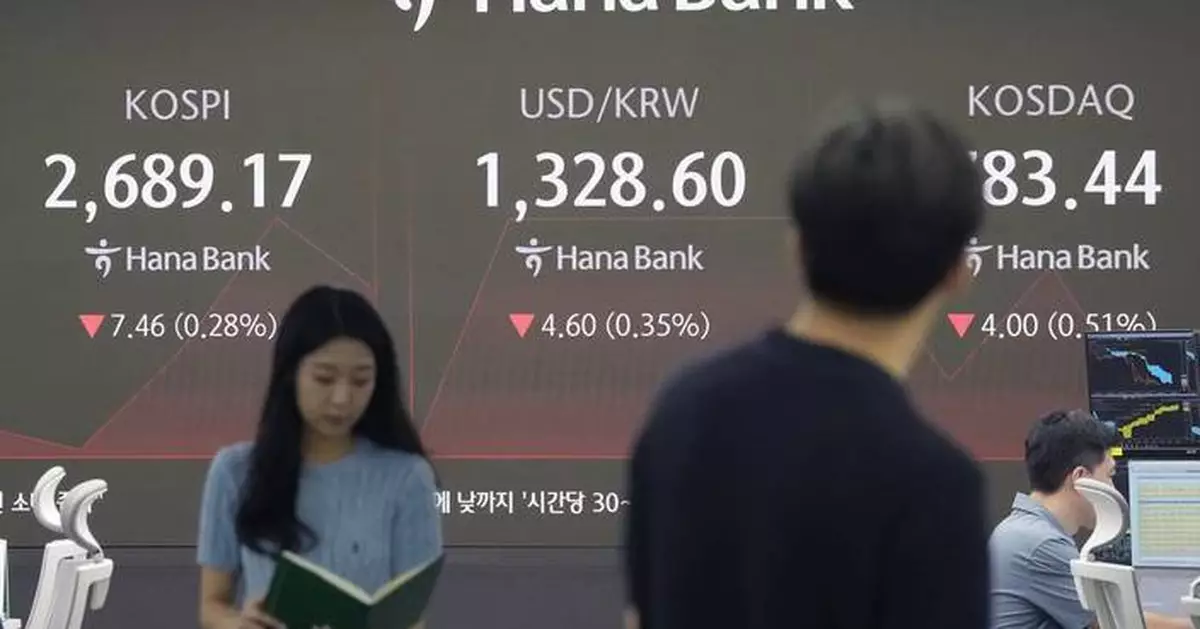NEW YORK (AP) — U.S. stocks ticked higher Wednesday after more big companies delivered profit reports that topped analysts’ expectations.
The S&P 500 rose 0.4% a day after breaking an eight-day winning streak, its longest of the year. The index is back to within 0.8% of its all-time high set last month.
The Dow Jones Industrial Average added 55 points, or 0.1%, while the Nasdaq composite gained 0.6%.
Treasury yields eased a bit in the bond market as investors wait for the week’s main event, which will arrive Friday. That’s when Federal Reserve Chair Jerome Powell will give a speech at an annual economic symposium. The hope is he’ll offer clues about how deeply and quickly the Fed will begin cutting interest rates next month after it jacked them to a two-decade high to beat inflation.
In the meantime, more companies joined a parade to deliver what looks to be the best growth in profit for S&P 500 companies since late 2021.
Target jumped 11.2% after the retailer said an important underlying measure of sales strength for the spring came in at the high end of its expectations, as traffic increased at both its stores and online. Its profit topped analysts’ estimates, and it raised its forecast for the full year.
TJX, the company behind TJ Maxx and Marshalls, rose 6.1% after it likewise reported stronger profit for the latest quarter than expected. The retailer also raised its profit forecast for the full year and said it saw increased customer transactions at all of its divisions.
They helped offset a 12.9% drop for Macy’s. The company reported better profit than analysts expected, but its revenue fell short of forecasts. It also lowered its expected range for sales this year, due in part to “a more discriminating consumer.”
Worries have been growing about whether U.S. shoppers can keep up their spending and keep the slowing economy out of a recession. Inflation is slowing, but prices are nevertheless much higher than before the pandemic, and many U.S. households have burned through the savings they built up during that stay-at-home period.
Concerns have been particularly high for U.S. households at the lower end of the income spectrum. High interest rates instituted by the Federal Reserve have made it more expensive to borrow money, compounding the difficulty.
That’s why the widespread expectation is for the Fed next month to lower its main interest rate for the first time since the COVID crash of 2020. The only question is how much and how quickly it will move.
Most Federal Reserve officials agreed last month that they would likely cut at their next meeting in September, as long as inflation continued to cool, according to minutes of the meeting released Wednesday.
The yield on the 10-year Treasury has been sinking since April on such expectations. It eased a bit further Wednesday, down to 3.79% from 3.81% late Tuesday.
A preliminary revision released by the U.S. government in the morning suggested the economy created 818,000 fewer jobs in the year through March than earlier reported. That’s a big number and adds to evidence showing a cooling job market, though it was smaller than some had feared.
“We have long warned that the jobs numbers were unreliable and subject to dramatic revision,” said Nancy Tengler, chief executive of Laffer Tengler Investments. She suggested focusing on the longer term and said rising U.S. worker productivity is an encouraging signal for the economy.
On Wall Street, coal companies Arch Resources and Consol Energy saw their stocks swing after they said they were combining in an all-stock “merger of equals.” After merging, they plan to go by a new name, Core Natural Resources.
Both their stocks initially jumped following the announcement but regressed as the day progressed. Arch Resources ended the day down 1.9%, while Consol Energy gained 0.9%.
All told, the S&P 500 rose 23.73 points to 5,620.85. The Dow gained 55.52 to 40,890.49, and the Nasdaq composite tacked on 102.05 to 17,918.99.
In stock markets abroad, indexes were mixed. Japan’s Nikkei 225 slipped 0.3%. It was a much more modest move than some of its huge swings in recent weeks, including its worst day since the Black Monday crash of 1987.
AP Business Writers Yuri Kageyama, Matt Ott and Alex Veiga contributed.
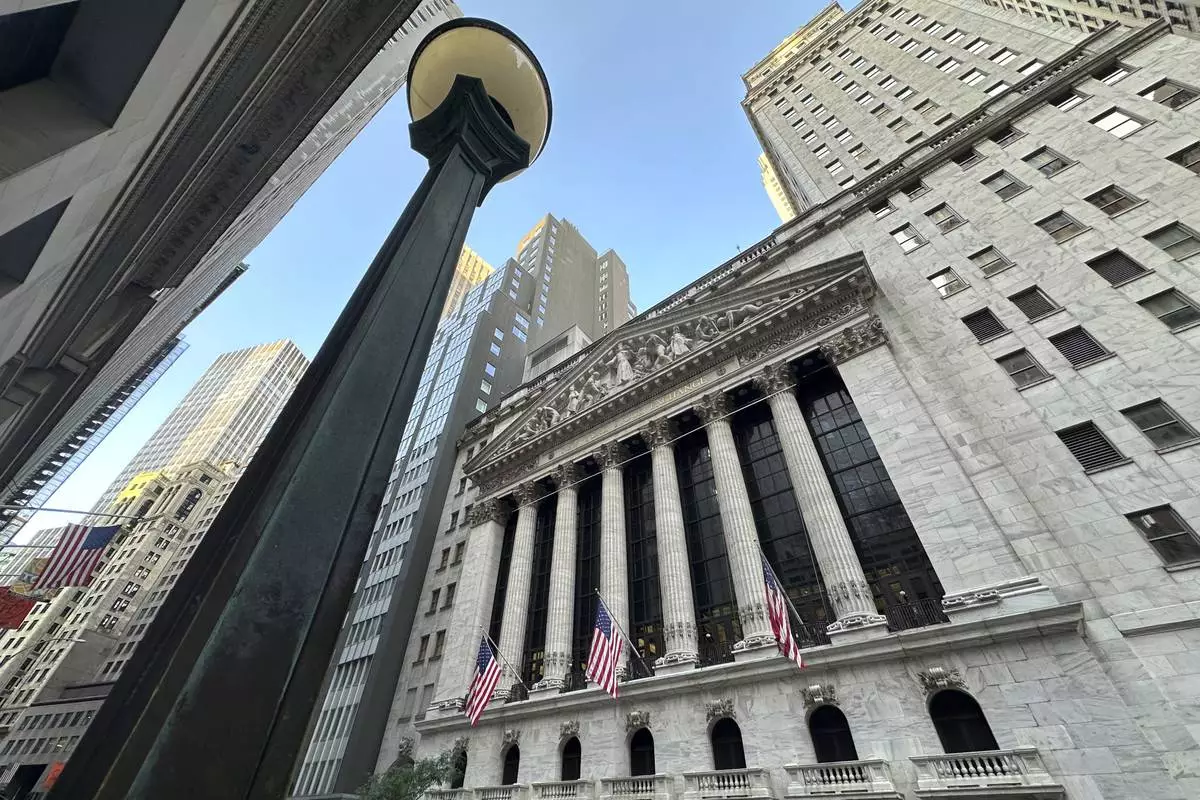
The New York Stock Exchange is shown on Wednesday, Aug. 21, 2024, in New York. (AP Photo/Peter Morgan)
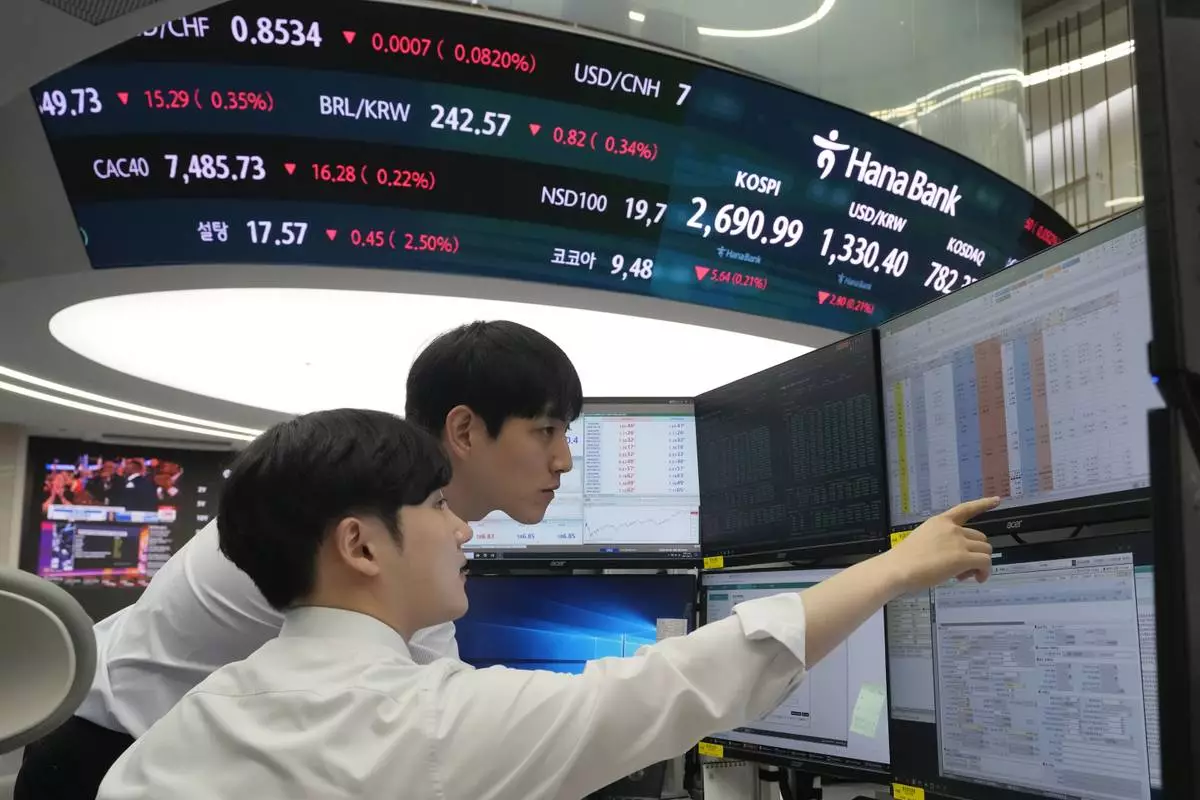
Currency traders watch monitors at the foreign exchange dealing room of the KEB Hana Bank headquarters in Seoul, South Korea, Wednesday, Aug. 21, 2024. (AP Photo/Ahn Young-joon)
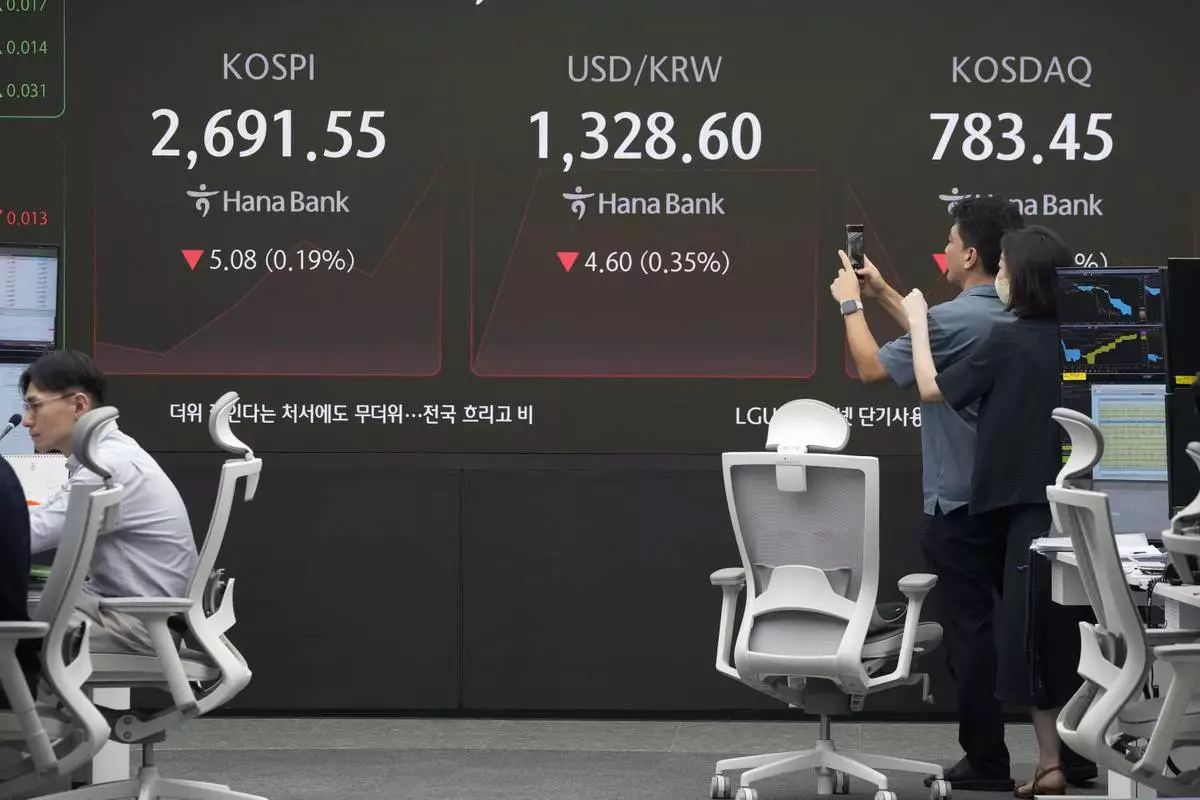
A currency trader takes photos of a screen showing the Korea Composite Stock Price Index (KOSPI), left, and the foreign exchange rate between U.S. dollar and South Korean won, center, at the foreign exchange dealing room of the KEB Hana Bank headquarters in Seoul, South Korea, Wednesday, Aug. 21, 2024. (AP Photo/Ahn Young-joon)
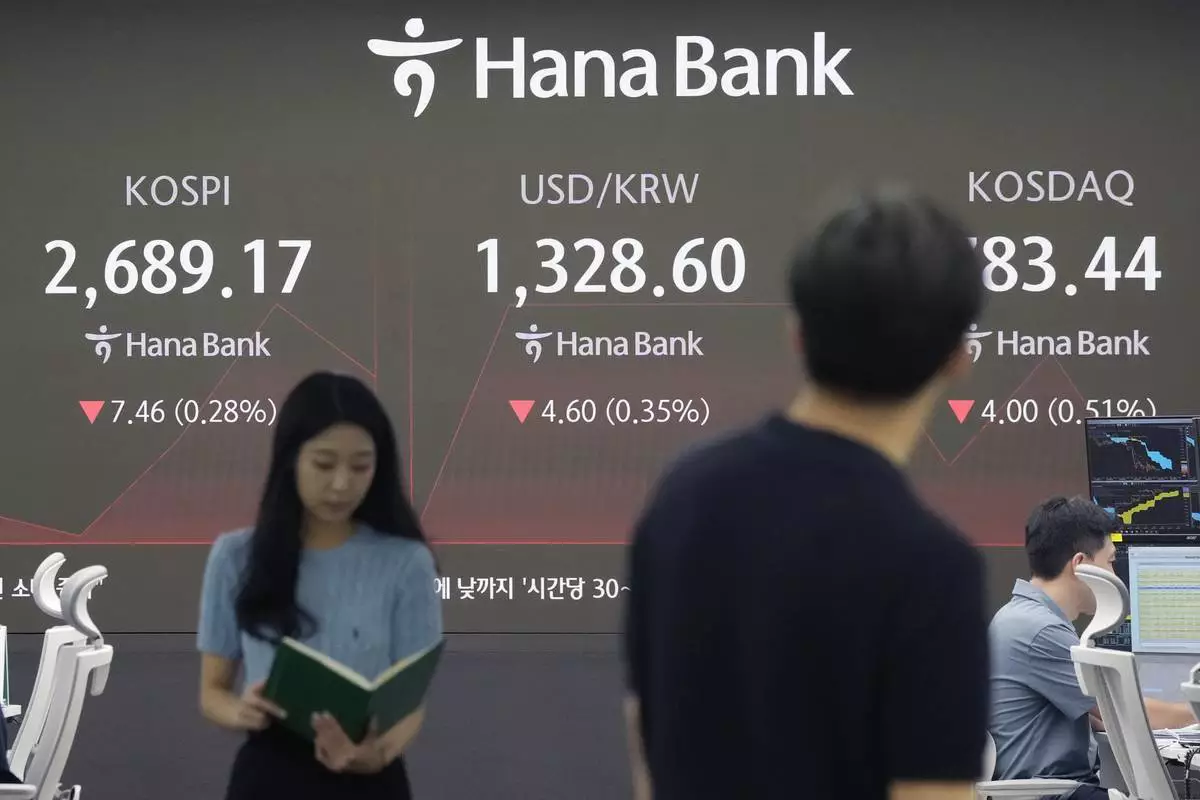
Currency traders work near a screen showing the Korea Composite Stock Price Index (KOSPI), left, and the foreign exchange rate between U.S. dollar and South Korean won, center, at the foreign exchange dealing room of the KEB Hana Bank headquarters in Seoul, South Korea, Wednesday, Aug. 21, 2024. (AP Photo/Ahn Young-joon)
FRANKFURT, Germany (AP) — With inflation subsiding, the European Central Bank cut interest rates again on Thursday to prop up tepid growth with lower borrowing costs for companies and home buyers. The U.S. Federal Reserve likely won’t be far behind in joining the rate-cutting process.
The bank’s rate-setting council lowered the deposit rate from 3.75% to 3.5% at a meeting at its skyscraper headquarters in Frankfurt.
It was the second rate cut as the bank starts to withdraw some of the swift rate increases it imposed to snuff out a burst of double-digit inflation that broke out after Russia cut off most natural gas supplies over its invasion of Ukraine.
But experts don't expect a rapid series of rate cuts from either the ECB or the Fed central bank to anywhere near the rock-bottom levels from before the 2020 outbreak of the COVID-19 pandemic. They say the ECB will tiptoe, rather than slash, and might cut rates only one more time this year. Inflation's down with the help of lower oil prices.
Inflation in the 20 countries that use the euro currency fell to 2.2% in August, not far from the ECB’s 2% target, down from 10.6% at its peak in October, 2022.
At her post-decision news conference, bank President Christine Lagarde said recent data had confirmed “our confidence that we are heading towards our target in a timely manner.”
But she steered clear of any guidance on further cuts. She said the bank would make rate decisions on a meeting by meeting basis depending on incoming information about the economy and was "not pre-committing to a particular rate path.”
Policy makers must keep an eye on simmering inflation among services companies and rising wages as workers push to make up for purchasing power lost to the outburst of inflation that followed the end of the pandemic.
The ECB cut once in June and then hit pause in July before going on summer break in August. The rate-setting council led by President Christine Lagarde has to juggle concerns about a disappointing outlook for growth against - which argues for cuts - against the need to make sure inflation is going to reach the bank’s 2% target and stay there - which would support keeping rates higher for a bit longer.
Consumer prices spiked after Russian cut off most natural gas shipments to Europe over its February, 2022 invasion of Ukraine, sending utility bills higher. The rebound from the pandemic also led to bottlenecks in supplies of parts and raw materials, further boosting inflation that then spread more broadly to services, a broad category that includes medical care, personal services such as haircuts, restaurants, hotels and entertainment.
The ECB and the Fed responded with swift rate rises, the ECB bringing its benchmark rate to a record high of 4%, since cut in June to 3.75%.
The central bank’s benchmark rate strongly influences what private-sector banks pay to borrow - and through that rates across the rest of the economy. Higher rates cool inflation by making it more expensive to borrow and buy things, holding back price rises. But high rates can slow growth, and that worry is coming into focus.
Higher rates in Europe and the U.S. have meant increased mortgage costs for home buyers, and higher payments for people who run credit card balances or buy cars on credit. But they have been a boon to savers and retirees who like interest income and are getting visible returns on their bank holdings or money market accounts after years of zero returns.
The Fed is also expected to make a first cut in its benchmark rate at its Sept. 17-18 meeting from a 23-year high of 5:25%-5.5%. Consumer prices rose 2.5% in August from a year earlier, down from 2.9% in July. It was the fifth straight annual drop in inflation. Core inflation excluding volatile fuel and food - which can be a better guide - was higher at 3.2%.
“The long-awaited Fed easing cycle is upon us,” said Brian Coulton, chief economist at Fitch Ratings, but the Fed rate-setters “will be cautious after the inflation challenges of the past few years. The pace of rate cuts will be gentle and monetary easing won’t do much to boost growth next year.”
Europe growth has been sluggish, at 0.3% in the second quarter of this year and a roughly 1.0% annual rate based on performance in the first half. That follows more than a year of near-zero stagnation. Hopes for a more robust pickup have been dampened by recent indicators of business and consumer sentiment, and by a stream of bad news from the eurozone’s biggest economy, Germany.
Germany contracted by 0.1% in the second quarter and its outlook remains gloomy amid a global slowdown in manufacturing. On top of that come long-term factors such as an ageing population, shortage of skilled workers, lagging implementation of digital technology, and excessive bureaucracy that slows down business creation and expansion. Major employer Volkswagen has dropped its no-layoffs pledge that was to run through 2029 as it seeks to cut costs, and has warned it may need to close one or more factories in Germany amid weaker demand for its new electric vehicles in Europe and in China.

FILE - A light installation is projected onto the building of the European Central Bank during a rehearsal in Frankfurt, Germany, Thursday, Dec. 30, 2021. (Photo/Michael Probst, File)






